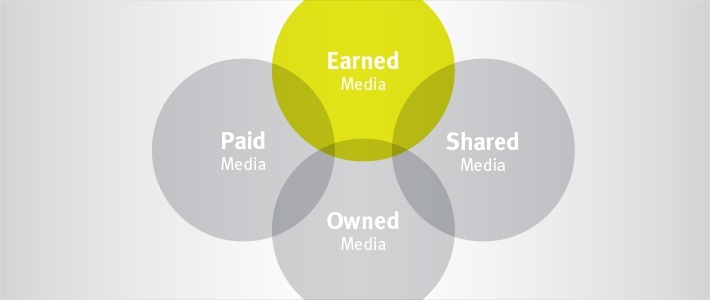In this series, we have made the case for unbundling, repurposing and amplifying content that originated elsewhere, often in print. In the previous post we discussed how to amplify content through paid media. Working through the PESO acronym – paid, earned, social and owned – it’s now time to look at earned media.
Earned is the closest we get to conventional PR, albeit with a digital twist. Think social media, blogs and recommendation engines as outposts of PR activity to be combined with the targeting of traditional print and broadcast media, and digital-only publications.
This post doesn’t set out to tell you how to do PR. Rather it tells you why you should continue to do it. Why, in other words, bother with earned media when the combination of paid, social and owned can be so potent? It is a useful challenge in an era of content marketing where every firm is a publisher that hosts content, where every firm can use paid platforms such as Google search and LinkedIn to target content directly to clients and would-be clients, and where every firm can use social media for organic (as well as paid-for) reach.
If you can pay for it and own it why earn it? For these reasons:
1. Trust, authority and credibility
Independent, third party journalism – that can’t be bought – carries with it an authority that is impossible to replicate. As such, it is a trusted source like no other. Some two-thirds of European consumers trust sources of news, a figure that dwarfs other forms of communication. Journalists will filter and edit. Journalists will look to cover compelling stories, products that differentiate and services that innovate. That’s why coverage has to be earned.
2. Reach
Mainstream news sources – B2B as well as consumer – are likely to reach parts owned media can’t. The editorial and commercial proposition of these publications starts with the audience and both of these pillars of a media organisation devote money, energy and resource producing an editorial product that will appeal to that core audience.
3. Conversion
There is plenty of evidence that a mention or recommendation from an independent third-party source is worth more than self-promotion. This is modern day word of mouth, sometimes mediated through a publication and sometimes through a forum, an adviser or social media (LinkedIn, Facebook or Twitter). According to figures quoted by AdAge, between 25 per cent and 50 per cent of all traffic and lead generation comes from earned media.
4. Longevity
The gift that keeps on giving. A mention in a web-based newspaper or trade article lives on, often to be discovered via a search engine a week, month or year from publication. And because these sites have search engine optimisation (SEO) authority as well as the human authority, they are likely to appear high up on the Google, Bing or Yahoo! results page, often higher than your own website.
5. Search engine optimisation
And that publication’s search engine authority can have a benign affect on your website too. If there is a link back to your site, that will incrementally lift the site’s search engine ranking – inbound links, especially from authoritative sites, are a key part of an optimised site. Remember there is a symbiosis between the elements of the PESO model. They don’t just work in isolation, they are often self-reinforcing. And this is a good example.


